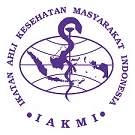About the Journal
Journal of Health Policy and Management (JHPM) is an electronic, open-access, double-blinded, and peer-reviewed international journal, focusing on health policy, health planning, health systems, and healthcare management, with a special focus on low- and middle-income countries. The journal began its publication on October 21, 2015, and it is published twice yearly. Due to increasing paper submissions, starting January 1, 2019 (Volume 4) JHPM is published three times yearly (in January, May, and September).
|
Publisher: |
JHPM is published by the Master’s Program of Public Health, Graduate School, Universitas Sebelas Maret |
|
Publisher’s address: |
Jl. Ir. Sutami 36 A, Surakarta 57126, Central Java, Indonesia. |
|
Editor in chief: |
Dr. Rossi Sanusi, Universitas Gajah Mada, Indonesia |
|
Publication model: |
Open access |
|
Frequency: |
three times yearly |
|
Launch date: |
October 21, 2015 |
| Indexed by: |
DOAJ, CABI Global Health, Google Scholar, CrossRef, SINTA, GARUDA |
|
Peer review model: |
Double-blinded. The names of reviewers are hidden from the author. |
|
License and copyright: |
Creative Commons Attribution 4.0 International (CC BY 4.0) License (https://creativecommons.org/licenses/by/4.0/). |
|
Electronic article identifier: |
Digital object identifier (DOI) by CrossRef |
|
e-ISSN: |




